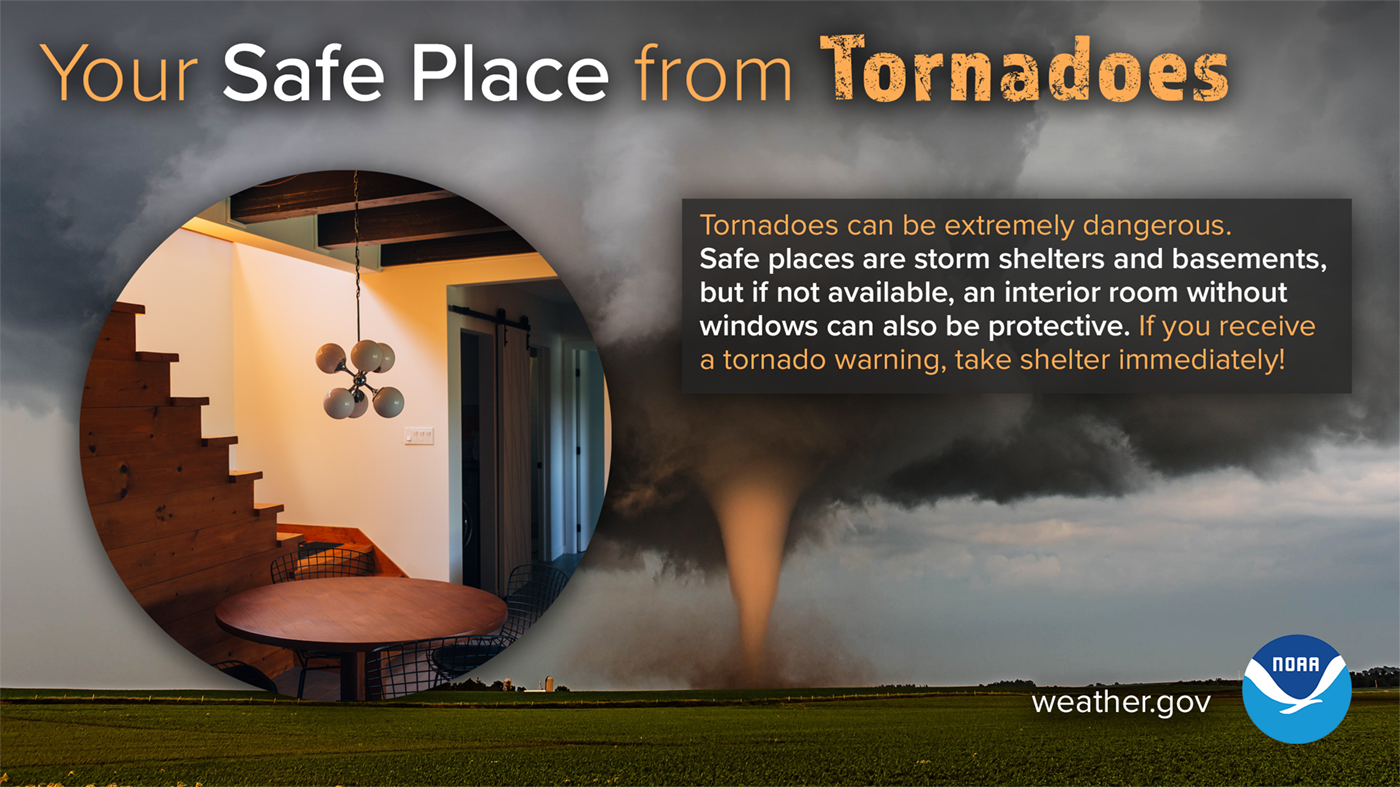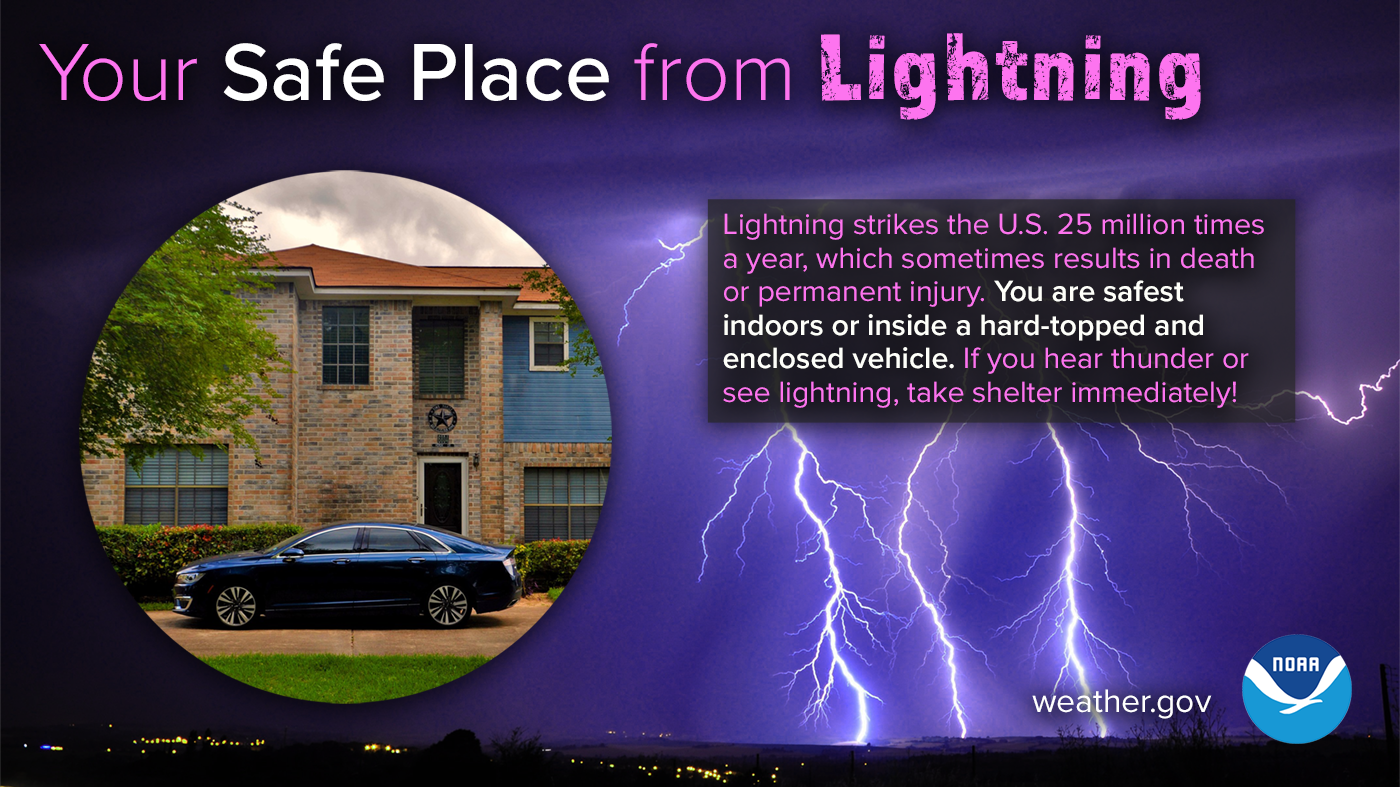Please help the NWS spread these messages on social media! Everyone is welcome to use the text and images provided below to help the NWS build a Weather-Ready Nation.
Facebook
Tornadoes can be extremely dangerous. Safe places include storm shelters and basements — but if not available, an interior room without windows can also be protective. If you receive a tornado warning, take shelter immediately! weather.gov/safety/tornado
Twitter
Tornadoes can be extremely dangerous. Safe places include storm shelters and basements — but if not available, an interior room without windows can also be protective. If you receive a tornado warning, take shelter immediately! weather.gov/safety/tornado #WeatherReady

Facebook
Rip currents kill over 100 beach-goers in the U.S. each year. When visiting the ocean, you are safest at beaches with lifeguards. Stay Weather-Ready and learn more about rip current safety at weather.gov/safety/ripcurrent
Twitter
Rip currents kill over 100 beach-goers in the U.S. each year. When visiting the ocean, you are safest at beaches with lifeguards. Stay #WeatherReady and learn more about rip current safety at weather.gov/safety/ripcurrent

Facebook
Lightning strikes the U.S. 25 million times a year, which sometimes results in death or permanent injury. You are safest indoors, or inside a hard-topped enclosed vehicle. Stay Weather-Ready and learn more about lightning safety: weather.gov/safety/lightning
Twitter
Lightning strikes the U.S. 25 million times a year, which sometimes results in death or permanent injury. You are safest indoors, or inside a hard-topped enclosed vehicle. Stay #WeatherReady and learn more about lightning safety: weather.gov/safety/lightning

Facebook
Heat is the leading cause of weather-related deaths most years. You are generally safe indoors with the AC on, while staying hydrated. If you can’t easily get indoors, stay in the shade. Stay Weather-Ready and learn more about heat safety: weather.gov/safety/heat
Twitter
Heat is the leading cause of weather-related deaths most years. You are generally safe indoors with the AC on, while staying hydrated. If you can’t easily get indoors, stay in the shade. Stay #WeatherReady and learn more about heat safety: weather.gov/safety/heat

Facebook
During a flood, water levels and flow speed can quickly change. You are safest by staying indoors, or seeking higher ground if shelter isn’t available. If you’re stuck outside when a flash flood occurs, do not attempt to cross flood waters by vehicle or on foot.
Learn more about flood safety at weather.gov/safety/flood
Twitter
During a flood, water levels and flow speed can quickly change. You are safest by staying indoors, or seeking higher ground if shelter isn’t available. Never cross flood waters by vehicle or on foot. weather.gov/safety/flood #WeatherReady

Facebook
Tsunamis are rare but incredibly destructive, so know where to go if you’re by the coast. You are generally safer by going to official evacuation zones, higher ground, or further inland. Identify your safe places before a tsunami occurs. weather.gov/safety/tsunami
Twitter
Tsunamis are rare but incredibly destructive, so know where to go if you’re by the coast. You are generally safer by going to official evacuation zones, higher ground, or further inland. Identify your safe places before a tsunami occurs. weather.gov/safety/tsunami

Facebook
During high winds, tree damage is expected, and loose objects can become airborne and dangerous. You are safest indoors, away from windows, in an interior room. Stay Weather-Ready and learn more about wind safety: weather.gov/safety/wind
Twitter
During high winds, tree damage is expected, and loose objects can become airborne and dangerous. You are safest indoors, away from windows, in an interior room. Stay #WeatherReady and learn more about wind safety: weather.gov/safety/wind
